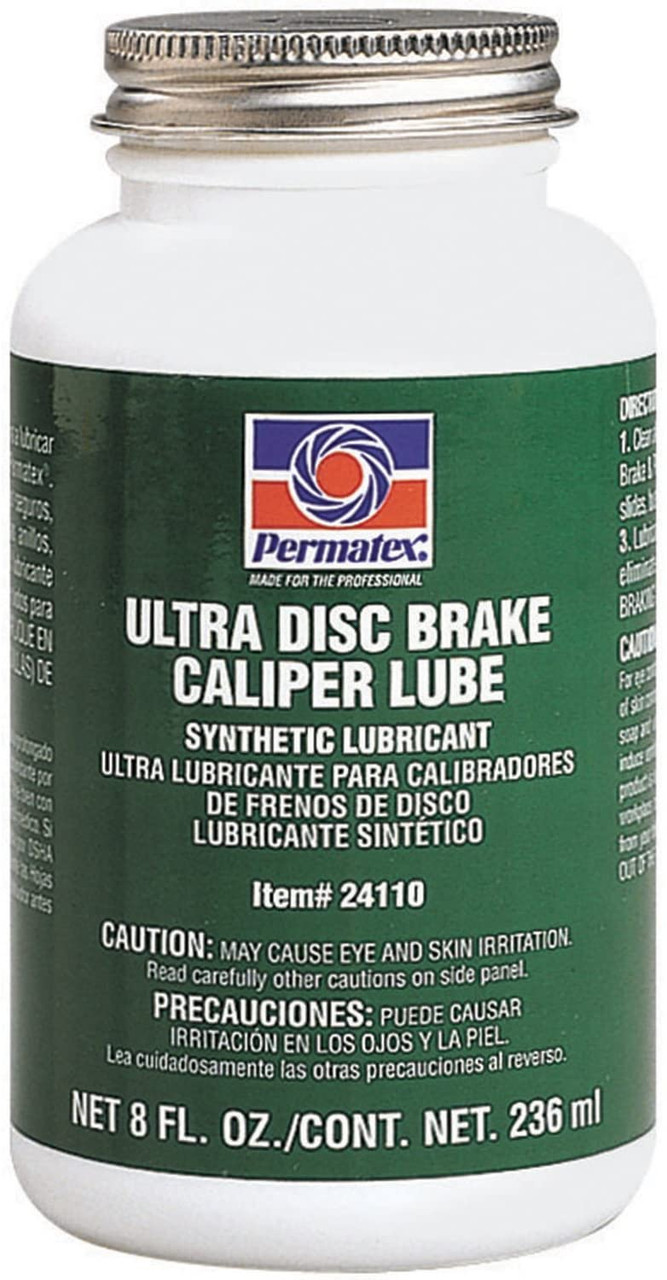Forum Replies Created
-
AuthorReplies
-
The problem I’m having with using a stethoscope is the louder engine noise, when present, somewhat mimics the normal engine sound. It’s just louder.
As this is RPM related (or at least varies somewhat by throttle position) being unable to manipulate the throttle myself while probing under the car is also challenging — I can’t tell if the throttle is being manipulated or the extra noise is ramping up or down by itself.
Any advice is appreciated.
The prior lubricant on these pins was the green Permatex stuff, but I suspect the sleeves were already compromised at that point. This isn’t my vehicle so I don’t know what happened before that. As such, I went ahead and ordered the new pins which should arrive tomorrow.
I brought this up once before and received varying responses. Toyota recommends the lithium soap-based glycol grease for the caliper slides, but there are dealerships that don’t even use that stuff.
Nobody seems to know if that Toyota grease is critical for ensuring the pins (and sleeves) behave properly.

2004
Called the dealership. The lower slide pins are $20 each, and won’t be available until tomorrow morning. Of course, the parts desk doesn’t know for sure if the rubber sleeve is included because all they have is a drawing.
I wasn’t sure what else to do. This is the kind of thing where I didn’t want to take chances on aftermarket parts since the sizing of that sleeve is critical.
We have so little rain here that I doubt rust is a factor. The brakes front and back have no signs of rust anywhere.
I’m not sure yet if buying new pins is the answer (see above) because the photos don’t show the rubber sleeves included, and that’s really what I need. I guess I’ll have to drive to the dealership in a few hours and see what they have…
I’m already using silicone paste, but it could have been a previous lubricant that caused the rubber to swell. Toyota actually calls for lithium soap-based glycol grease, so I should probably acquire some of that.
No crud of any kind inside the bore. The pin catches on the leading edge of the rubber sleeve (look closely in the above photo) and won’t insert all the way in. I even tried putting the sleeve in first, then inserting the pin. No go — the rubber sleeve got stuck inside the bore after I attempted to insert the pin.
I couldn’t find any Toyota part numbers for the sleeve, or pin + sleeve. Must be sold as part of a kit? This is a 2004 RAV4 by the way.
All of the aftermarket manufacturers I’ve found show the pin without the rubber piece.
Dorman http://www.rockauto.com/catalog/moreinfo.php?pk=963428&cc=1434113&jnid=515&jpid=5
Carlson http://www.rockauto.com/catalog/moreinfo.php?pk=3055647&cc=1434113&jnid=515&jpid=2
Raybestos http://www.rockauto.com/catalog/moreinfo.php?pk=571924&cc=1434113&jnid=515&jpid=4
Wagner http://www.rockauto.com/catalog/moreinfo.php?pk=541061&cc=1434113&jnid=515&jpid=1Carlson makes a boot kit but I can’t tell if those are sleeves for the pin. Whatever it is, the grooves run vertically, not horizontally like the Toyota OEM sleeve. http://www.rockauto.com/catalog/moreinfo.php?pk=3055890&cc=1434113&jnid=517&jpid=0
Any suggestions welcomed. I’m desperate at this point.
Any idea why Toyota didn’t recommend silicone in the first place? What advantage is there to using the real stuff spec’d by Toyota?
Thanks!
I guess the question was how many people actually use the Toyota recommended grease?
There are MANY Toyota dealerships that do not in their service departments.
Yeah, I think it’s actually the video card that is choking.
I feel your pain with that 386. That’s something I don’t miss at all.
I acquired a PDF manual from Bishko for my Honda Element.
Really, I’m not complaining (too much) just laughing at how the PDF was created. Bishko had to scan a paper service manual into PDF because Honda was apparently unwilling to supply their original PDF’s. All three volumes are combined into a single PDF weighing in at 195 MB, which bogs down older computers a little bit.
Bishko did go through and create clickable links to other sections, but I noticed a couple links are incorrect and they forgot some of the others. There’s no way to fix these links with Adobe Acrobat because the PDF is locked with a password. This is probably old news to you veteran Honda guys, but strange for me.
Hope Eric doesn’t mind me mentioning this. Amazon/Coast have a 15% off discount for Father’s Day that is applied at the checkout.
Been meaning to buy a new headlight and just got $3.xx off on my order.
Got everything back together. The replacement fusible link block saved the day. Alternator purs nicely at 14.1 volts.
The “hard” part was dealing with the low idle afterwards. Never seen an ECU struggle so much to re-learn everything, especially after several trips — it was nearly undriveable. But cleaning the MAF sensor, PCV valve, and throttle body cured it.
Excellent. I look forward to it.
[quote=”cap269″ post=138580]The tires should be replaced, regardless of remaining tread. Blowouts are dangerous. Buy the best tire you can afford that is suitable for your climate, road conditions, and type of driving. Everytime I’ve gotten ‘cheap’ tires, it has always cost more in the long run.[/quote]
Oh, no doubt, I’m going to replace them. The question was more about strategy and perspective than anything.
I’m not sure if conventional wisdom regarding this problem has any foundation in facts. A look around the internet reveals all types of suggestions for future prevention, from parking in a garage (not possible for me), to keeping wheels covered from the sun when possible, to applying tire dressings, to avoiding certain manufacturers, yada yada yada.
I think much of it is bunk, but I don’t know what to believe, if anything.
-
AuthorReplies
 Our Address
Our Address 
